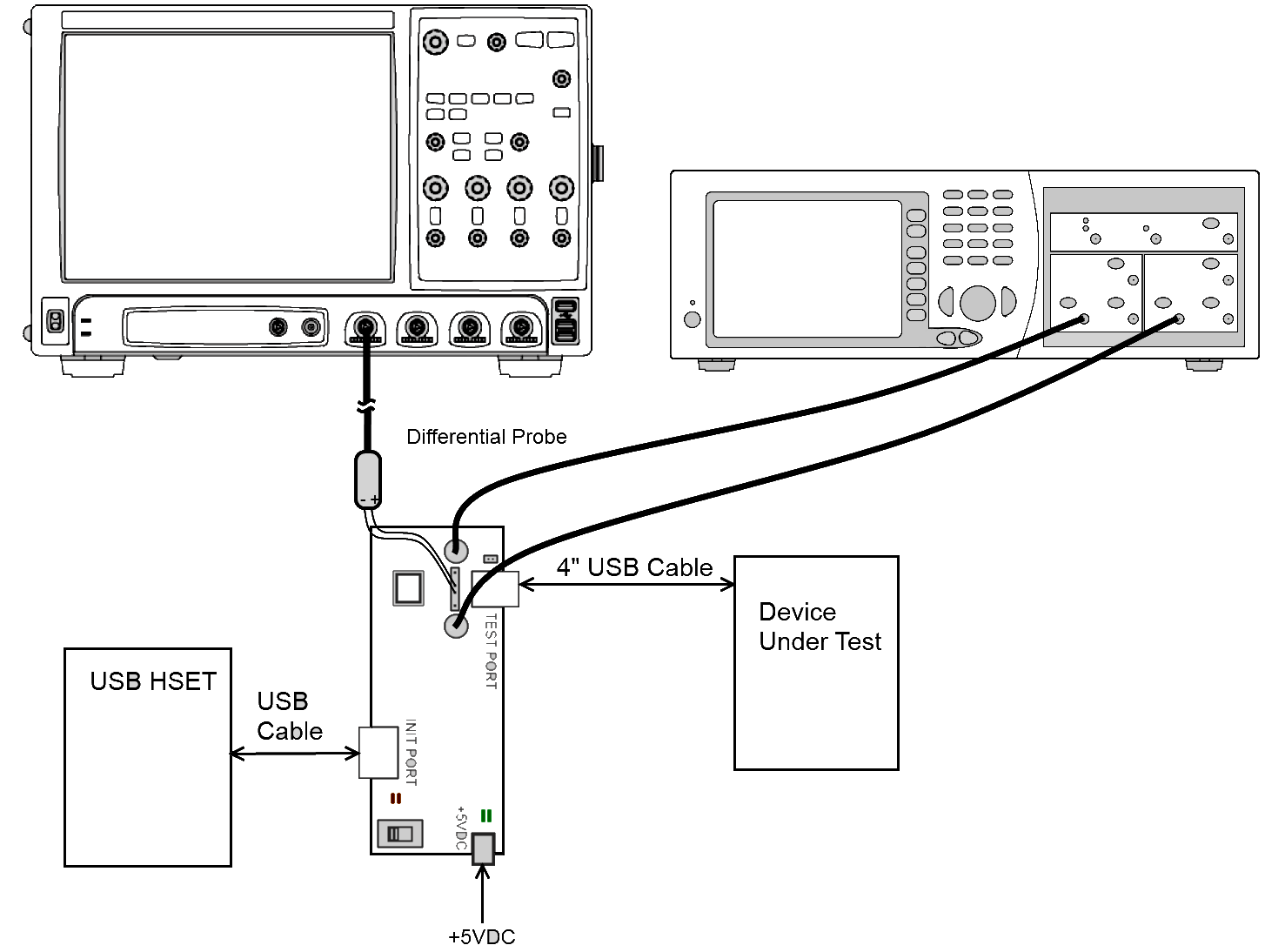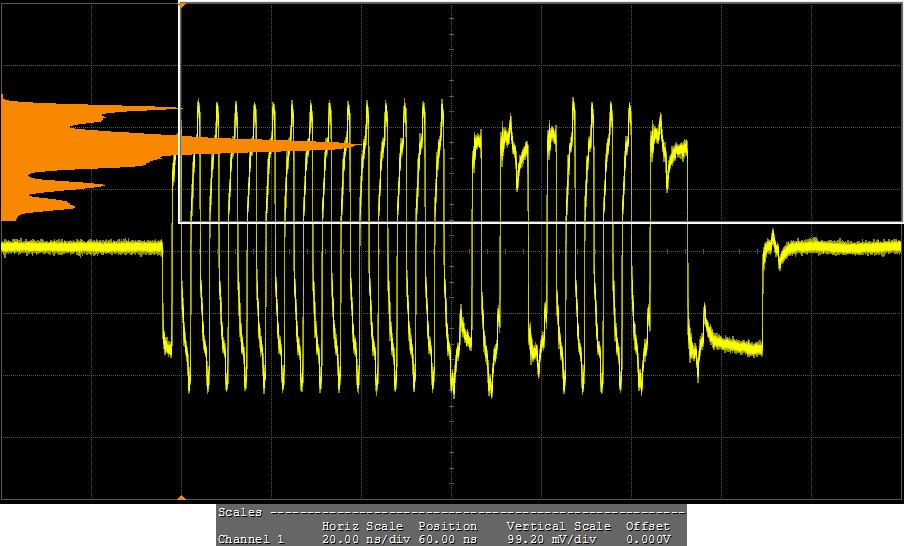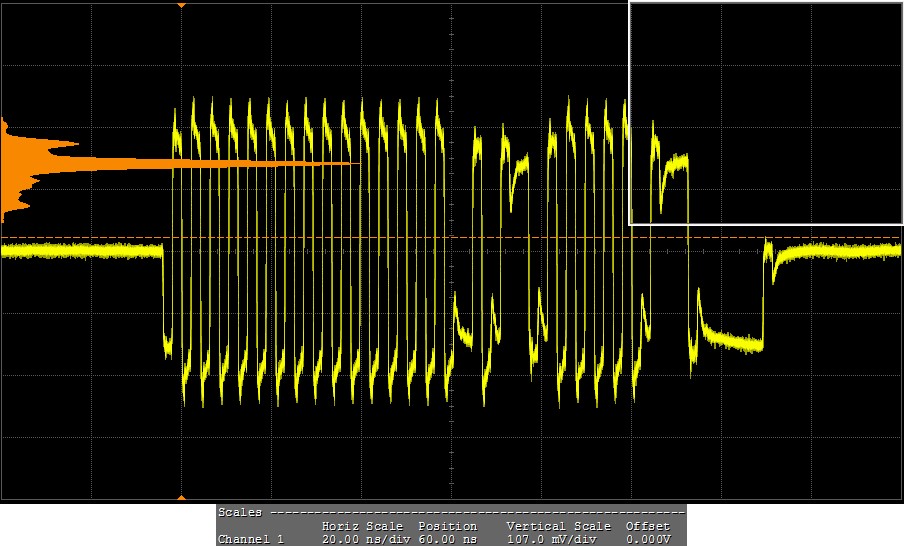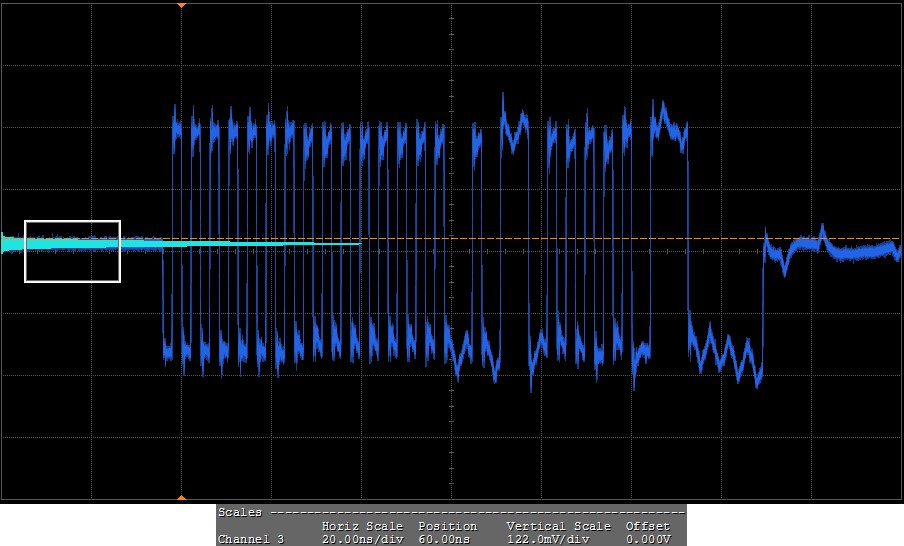High Speed Receiver Testing
USB 2.0 Specification, Section 7.1
This test is only for High Speed devices and hubs and the device must support the test mode SE0_NAK. A scoop, data generator, receiver sensitivity test fixture and a set of SMA cables are required for this test. When a High Speed device is in SE0_NAK test mode, the device must respond to any IN token packetwith a NAK handshake. This makes it possible to do a receiver sensitivity test.
The USB-IF certification receiver sensitivity test exists out of three tests.
12 bit SYNC field
test (EL_18)
With the data generator a
modified IN token packets that has a 12bit SYNC field is sent to the
device that is in SE0_NAK mode. This 12bit SYNC packet will emulate the
worst case scenario of the SYNC field (a normal packet has 32bit SYNC
field). It is observed with a scoop that the device NAK all packets
sent by the generator. When all packets are NAK by the device this test
is considered to have passed.
Receiver
Sensitivity (EL_17)
With the data generator an
IN token packet is sent to the device that is in SE0_NAK mode. With a
scoop the response of the device under test is observed and the
amplitude of the IN token packet is slowly dropped. The no squelch
value is the value where the device still NAK all IN toke packets.
A
High Speed product should be capable of reliably answering all packets
at a voltage |150mV|. The USB spec defines the measurement to be made
at the receiver pins, however, this is too difficult and test fixtures
must be used. Therefore a 50mV waiver zone is granted to compensate for
the voltage drop of the setup. Products with a captive cable an
additional voltage drop should be taken into account, the longer the
cable to more the voltage drop. So depending on the cable length of the
device with captive cable the receiver sensitivity can go over the
|200mV|.
Squelch (EL_16)
A
product may not become too sensitive and should not answer packets
below |100mV|. There is no additional waiver zone.
Below is a table with the allowed Squelch EL_16 and no Squelch EL_17
values:

A receiver sensitivity EL_17 product failure may cause a High
Speed device to fail using a long cable or with bad quality cables. A
fail for EL_16 is mostly silicon PHY related and therefore cannot be
fixed by a device developer. Using a certified USB silicon will give a
USB developer a certain guarantee that the product will pass the
receiver sensitivity test. However there are still many items that
could cause the device to fail, depending on the design around the
silicon.
Making the measurement
Making the voltage measurement can be tricky since reflection on the signal make it hard to say what the voltage is.
Therefore it helps in using histogram when doing the measurment. Now a days most scopes have an histogram option. Below a screenshot of the histogram approach on a full packet.

If there is allot reflection it can help to just do the histogram at the last part of the packet as shown below

It's possible that there is some DC offset on the measurement, make sure you take this into account. Use also histogram to measure the DC offset as shown below.

Check
also:
http://compliance.usb.org/index.asp?UpdateFile=Electrical&Format=Standard#3
None USB-IF Compliance Logo receiver tests
It's also interesting to run the following other receiver tests defined at the USB 2.0 Electrical Test Spec
